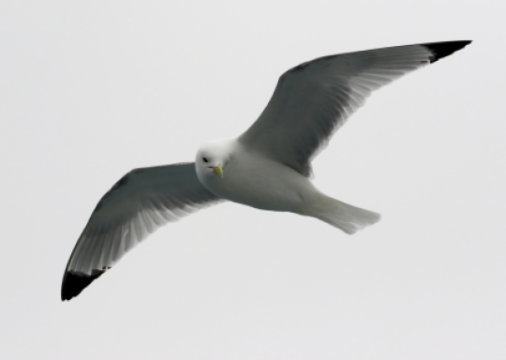[ad_1]
Seabirds such as gulls can be key indicators of environmental change as their populations respond to shifts in their ocean habitat over time. A new study from The Auk: Ornithological Advances investigates how several species have responded to changing environmental conditions in the Arctic over the last four decades. The authors find that a warming ocean is directly and indirectly affecting seabird populations in Alaska.
The University of Idaho’s Holly Goyert (now at the University of Massachusetts) and her colleagues used mathematical models to explore relationships between large, long-term datasets covering climate fluctuation, zooplankton abundance and distribution, and populations of several seabird species in the waters off Alaska from 1974 to 2014. They found that declines in populations of an Arctic gull called the Black-legged Kittiwake are tied to deteriorating zooplankton productivity, while their cousins the Red-legged Kittiwakes, also declining, are more sensitive to warming ocean surface temperatures. Not every seabird is in trouble, though — Common and Thick-billed murres, relatives of puffins, have proved resilient to changing conditions and may even be benefitting.
This study is the first attempt to explain how climate and habitat variability affect seabird population dynamics across such a large scale. “Our hope is that these results will be used in a proactive approach to seabird conservation, and that measures will be taken to prevent populations from declining to small sizes. For example, although Black-legged Kittiwakes are one of the more abundant gulls in the world, their populations are undergoing significant declines, which calls their global status into question,” says Goyert. “Our paper suggests that the deterioration of food web resources such as krill, which is related to warming oceans, has contributed to these declines.”
“Mass seabird deaths and breeding failures in recent years have the scientific community puzzled, and both appear to be climate-related,” according to Melanie Smith, Audubon Alaska’s Director of Conservation Science, who was not involved in the study. “This study is an important step in clarifying the effects of changing climate on seabird population dynamics across Alaska. We can use what we’ve learned here to design detailed monitoring and to better anticipate population declines, improving managers’ ability to protect vulnerable species.”
Story Source:
Materials provided by American Ornithological Society Publications Office. Note: Content may be edited for style and length.
[ad_2]















